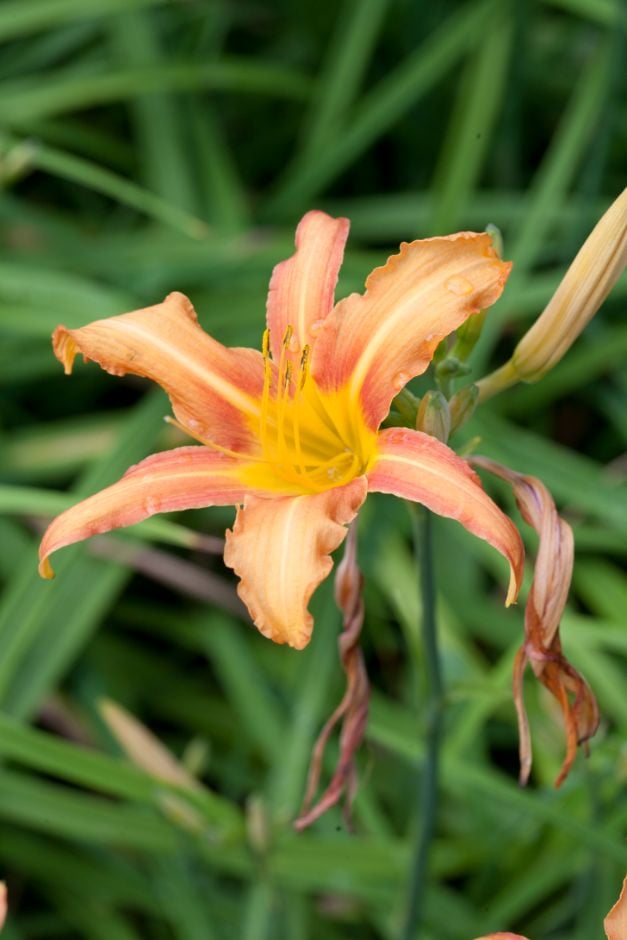Hemerocallis fulva
common orange daylily
A vigorous, clump-forming perennial to 1m tall with strap-shaped leaves, the outer ones arching outwards and the inner leaves upright. Large numbers of trumpet-shaped, tawny-orange flowers 5-12cm in diameter, each tepal with a pale central line, are borne in succession on the flowering stems in summer

Buy this plant
Size
Ultimate height
0.5–1 metresTime to ultimate height
2–5 yearsUltimate spread
0.5–1 metresGrowing conditions
Moisture
Moist but well–drainedpH
Acid, Alkaline, NeutralColour & scent
| Stem | Flower | Foliage | Fruit | |
| Spring | Green | |||
|---|---|---|---|---|
| Summer | Orange Red | Green | ||
| Autumn | Green | |||
| Winter |
Position
- Full sun
- Partial shade
Aspect
West–facing or South–facing or East–facing
Exposure
Exposed or Sheltered Hardiness
H7Botanical details
- Family
- Asphodelaceae
- Native to GB / Ireland
- No
- Foliage
- Deciduous
- Habit
- Bushy
- Potentially harmful
- TOXIC to pets (cats) - see the HTA guide to potentially harmful plants for further information and useful contact numbers
- Genus
Hemerocallis may be evergreen or herbaceous perennials, with narrow, strap-shaped leaves and funnel-shaped flowers on erect stems in late spring or early summer
- Name status
Correct
- Plant range
- China, Japan
How to grow
Cultivation
Grow in fertile, moist but well-drained soil preferably in full sun. Flowering is likely to be poor in shadier situations. Tolerant of heavy clay and poorer soils. May need watering in spring to early summer in dry conditions to ensure flowering. See Hemerocallis cultivation for details
Propagation
Propagate by division in early spring or early autumn
Suggested planting locations and garden types
- Coastal
- Cottage and informal garden
- Flower borders and beds
Pruning
Cut back flower stems after flowering has finished. Remove dead foliage as required
Pests
May be susceptible to aphids, slugs, snails, glasshouse red spider mite, thrips and Hemerocallis gall midge
Diseases
Generally disease-free, but may be susceptible to fungal leaf spot and rust diseases or bacterial leaf and stem rot
Get involved
The Royal Horticultural Society is the UK’s leading gardening charity. We aim to enrich everyone’s life through plants, and make the UK a greener and more beautiful place.